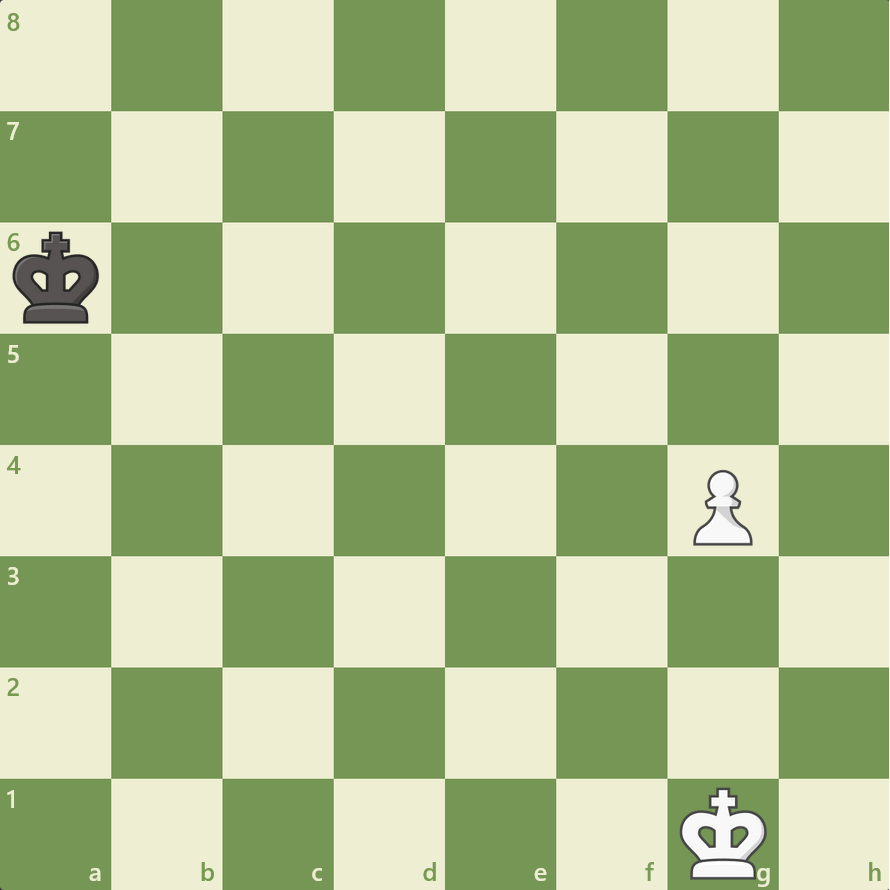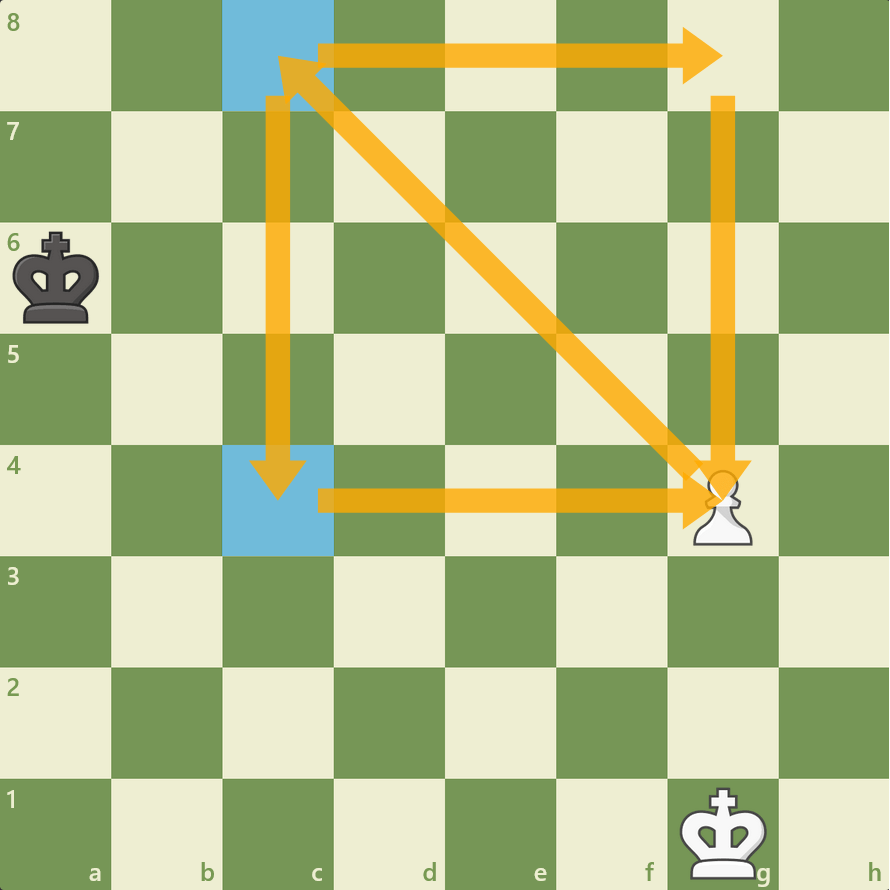
Square Rule
It's no secret that king-and-pawn endgames can be very tricky. Sometimes they are counterintuitive, and the slightest mistakes can cost you the game. But what if there was a simple to understand technique to help you calculate some of those positions?
Enter the square rule, the trick that helps you quickly assess if you can promote your pawns.
What Is The Square Rule?
The square rule is a visualization tool that players use to quickly assess if a pawn can promote before the enemy king catches up to it. As the name implies, it works by visualizing a square on the board. The pawn can promote if the opposing king can't step into the square on its next move.
Let's take a look at an example. In the position below, it's Black's turn to play. We can use the square rule to quickly assess if the white pawn can promote.

The first step is to imagine a diagonal line that starts on the pawn and ends on the promotion rank (to the side where the enemy king is).

Now, imagine another line starting at the ending square of the previous line and extending down the file until it reaches the rank of the pawn.

The third line joins the gap between the pawn and the last square of the previous line. The ending result is a triangle, which is also half of the square that will help us with this position.

The next step is to complete the square by imagining the other half of the triangle you've just made.

The square rule states that the king can catch the pawn if it can step into the square on its next move. If that's not the case, the pawn can reach the promotion square before the king gets to it.
The black king cannot step into the square in the example above, so White is free to run with their pawn to promote.

Why Is The Square Rule Important?
The square rule is important because it can help you to make the right decision during endgames. In this phase of the game, the slightest miscalculation can cause your downfall.
Imagine you're White in the position below. Black offers a queen trade, and you have almost no time on your clock. Should you go for the exchange?

If you know the square rule, you can quickly conclude that trading queens is a winning idea. After trading off the heavy pieces, you'll have the opportunity to create an unstoppable passed pawn.

Another added benefit of knowing the square rule is that it can save you a lot of time during the endgame. This advantage is significant since that's when players usually get into time trouble.
Test Your Skills
Now that you know about the square rule, it's time for you to test your skills. Use this visualization tool to identify the best move in each position.
Puzzle 1: Can your pawn promote?
Puzzle 2: What's the simplest way to win this endgame?
Puzzle 3: Can you promote the pawn?
Conclusion
You now know what the square rule is, why it is important, and how to use it in your games. Head over to our Drills page to practice king-and-pawn endgames to get better at this kind of position and win more games!









